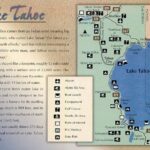In the world of surveying and geospatial measurements, precision is paramount. Whether you are mapping terrain, measuring property boundaries, or guiding construction projects, the data collected must be accurate. Over the years, Global Positioning System (GPS) technology has revolutionized the way we conduct surveys, but there is a newer, more advanced solution that enhances precision even further: Real-Time Kinematic (RTK) GPS. This system is setting a new standard in real-time positioning and surveying by providing centimeter-level accuracy.
In this article, we’ll explore how RTK GPS works, its benefits, and how it has transformed the way surveyors and professionals approach positioning tasks.
What Is RTK GPS?
At its core, RTK GPS is a sophisticated positioning system that improves the accuracy of traditional GPS. While conventional GPS receivers are typically accurate to within several meters, RTK GPS reduces the margin of error to within a few centimeters. This makes RTK GPS particularly valuable for applications that demand high precision, such as land surveying, agriculture, and construction.
RTK GPS works by using a combination of a base station and one or more rover units. The base station is a fixed GPS receiver that remains stationary and collects highly accurate positioning data. It continuously compares its known position to satellite signals and sends correction data to the rover units. These rovers, which are mobile GPS receivers, use the correction data from the base station to calculate their positions with extreme accuracy, all in real time.
How RTK GPS Works
The key to RTK GPS’s enhanced accuracy lies in how it processes satellite signals. Standard GPS relies on signals from satellites to calculate positions, but atmospheric interference and other factors can reduce the precision of these calculations. RTK GPS, however, uses differential correction, a technique that mitigates errors in satellite signals by comparing the data collected by the base station to the data collected by the rover.
Here’s a simplified breakdown of how the process works:
- Base Station Setup: The base station is placed in a fixed location with a known position. This base station receives satellite signals and compares them to its known coordinates to calculate any errors in the signal data.
- Rover Receivers: The rovers, which are mobile units, also receive satellite signals but rely on the base station to send them correction data. By combining the raw satellite data with the correction information from the base station, the rovers can determine their exact position in real time.
- Real-Time Positioning: The corrections are transmitted from the base station to the rover units via a radio signal, cellular network, or the internet. The rover unit continuously updates its position, allowing surveyors to collect highly accurate data as they move across a site.
This process allows RTK GPS systems to achieve an accuracy level that is far superior to traditional GPS, making it ideal for tasks that require precise measurements.
Advantages of RTK GPS in Surveying
The use of RTK GPS has become a game-changer in various industries where accurate positioning is crucial. From land surveying to agriculture, RTK GPS offers several advantages that make it a preferred choice for professionals.
Increased Accuracy
One of the most significant benefits of using RTK GPS is the accuracy it offers. While traditional GPS might be accurate to within a few meters, RTK GPS can achieve centimeter-level accuracy. This precision is essential in industries like surveying, where even a small error can lead to significant issues in property boundaries, construction layouts, and infrastructure planning.
In the middle of your surveying process, the real-time corrections provided by RTK GPS ensure that you are working with the most accurate data possible, allowing for better decision-making and reducing the risk of costly mistakes.
Real-Time Data Collection
Unlike other positioning systems that may require post-processing to correct data, RTK GPS provides real-time corrections. This means surveyors can collect highly accurate data on-site without needing to return to the office for additional analysis. The ability to work with real-time data improves efficiency and allows surveyors to make immediate adjustments if necessary.
For projects with tight deadlines, the real-time nature of RTK GPS ensures that measurements are accurate and available right away, streamlining the workflow and reducing the time spent in the field.
Versatility in Applications
RTK GPS is incredibly versatile and can be used in a variety of applications. In surveying, it’s used to measure land boundaries, topography, and construction site layouts with pinpoint precision. In agriculture, it helps guide autonomous tractors and machinery, ensuring that crops are planted in straight rows and reducing overlap or gaps. In construction, RTK GPS is used for positioning heavy machinery and ensuring structures are built according to precise plans.
This versatility makes RTK GPS a valuable tool for professionals across multiple industries, as it can be adapted to various tasks that require precise positioning and data collection.
Reduced Human Error
Manual measurements and traditional survey methods often leave room for human error. Whether it’s reading an instrument incorrectly or misinterpreting data, these errors can add up and lead to inaccurate results. RTK GPS minimizes human error by automating much of the data collection process. The base station and rover units continuously update their positions, providing accurate data without the need for manual calculations.
This reduces the chance of mistakes and ensures that the final measurements are reliable, which is especially important for projects that require strict adherence to design and legal boundaries.
Applications of RTK GPS
RTK GPS is being used in an increasing number of industries due to its precision and reliability. Below are some of the common applications where RTK GPS is making an impact:
Land Surveying
RTK GPS has become a standard tool in land surveying because of its ability to provide highly accurate measurements in real time. Surveyors can use it to establish property lines, create topographical maps, and set out construction projects with confidence that their data is precise.
Agriculture
In precision agriculture, RTK GPS is used to guide machinery, such as tractors and harvesters, with incredible accuracy. This ensures that planting, fertilizing, and harvesting are done efficiently, reducing waste and improving crop yields. Farmers rely on RTK GPS to map their fields, plan irrigation systems, and apply treatments with precision.
Construction and Infrastructure
In construction, RTK GPS is essential for guiding heavy equipment and ensuring that projects are built according to exact specifications. Whether it’s grading land, laying foundations, or positioning large structures, RTK GPS ensures everything is aligned correctly and within legal boundaries.
Autonomous Vehicles and Drones
RTK GPS is also being integrated into the navigation systems of autonomous vehicles and drones. In these applications, the high level of accuracy provided by RTK GPS ensures that vehicles and drones can operate safely and efficiently, whether mapping large areas or navigating complex environments.
Conclusion
RTK GPS has revolutionized the way professionals approach real-time positioning and surveying, offering unparalleled accuracy and efficiency. By providing real-time corrections and reducing human error, RTK GPS ensures that the data collected is precise and reliable, which is essential in industries where accuracy is non-negotiable.
From land surveying to agriculture and construction, RTK GPS has become an invaluable tool for ensuring that every measurement is accurate, every project is aligned, and every decision is informed by the best possible data. As technology continues to evolve, the role of RTK GPS in enhancing precision and efficiency will only grow.







